In 2024, we celebrated the 10th anniversary of our experimental apiary. Over a decade, it has become a major pillar of our R&D in favour of bee health. With nearly 400 colonies, the apiary has experienced constant growth. The rigorous monitoring of trials and colony management is ensured by our dedicated team of experts. This has not only led to the improvement or development of new products but also refined, through acquired experience, its practices with simple “tips and tricks” that facilitate daily work.
Our team shares here some advices—perhaps already known or tested by some—but which, although obvious, are sometimes forgotten. These small gestures nonetheless bring real comfort, safety, and efficiency in managing a livestock, while promoting the good health and development of colonies.
Beekeeping, let’s remember, is not an “exact science.” Many external factors can influence the health and dynamics of an apiary, honey harvest… Being a beekeeper means constantly demonstrating agility, observing, anticipating, and reacting. It’s a demanding activity but one that teaches us something new every day—and that’s precisely what makes it so exciting.


• Red magnet can signal that the hive has a problem (dead queen, stopped laying, sick…)
• Blue magnet can indicate that a swarm is ready to be transferred into a hive, that a hive is to be selected for transhumance, that the queen is to be marked, or that frames can be taken to make swarms. The key is to clearly identify the different colours corresponding to the actions to be taken.
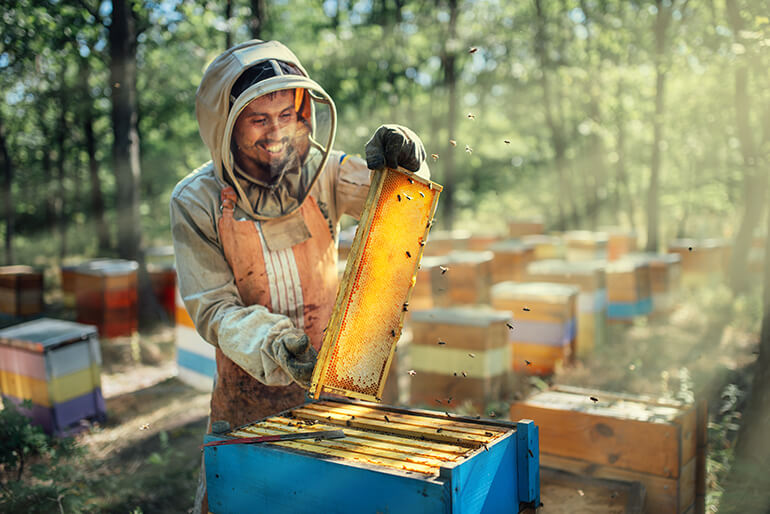
This tip is taken from an online tutorial. To simplify the installation of wax sheets on frames, simply fix a wax embedder onto a wooden board (requiring some DIY skills!). Then, place the frames with the wax sheet, activate the switch, and the wire heats automatically.
This method avoids handling the transformer’s tips, saving valuable time while making the operation more pleasant and fun.
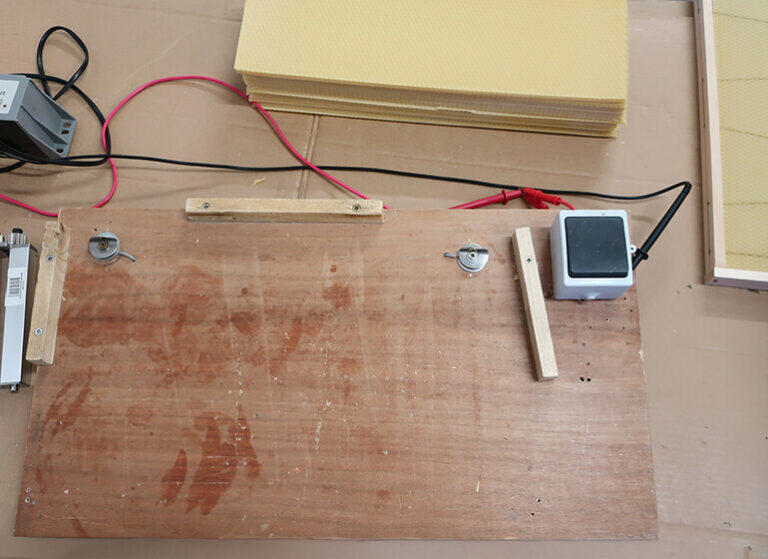
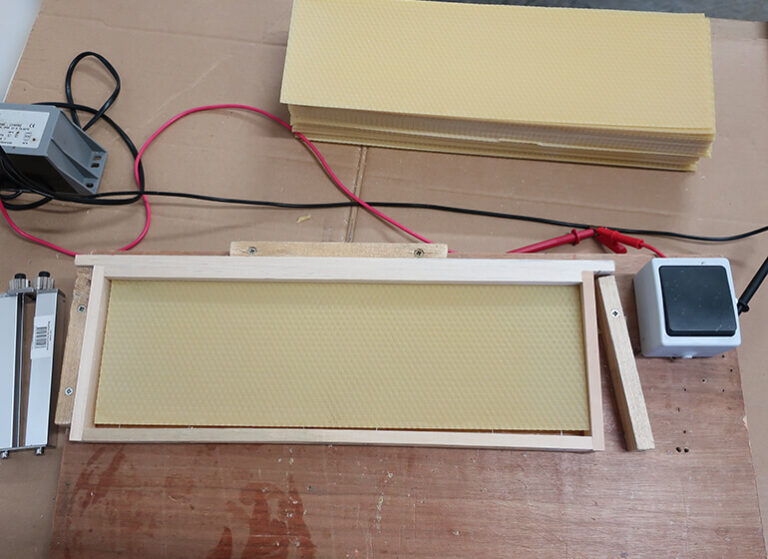
It’s true that our needs, on an apiary dedicated to testing the effectiveness of varroa treatments, differ from those of a typical beekeeper. In this context, precise and weekly counting of varroa mites on sticky boards is essential.
Rather than using greased boards, we’ve opted for standard-sized self-adhesive paper sheets. At each reading, these sheets are carefully collected and placed in cardboard boxes (similar to pizza boxes) to protect them.
For several years, we’ve been fortunate to be equipped with varroa scanners from the « Apisfero » brand, which ensure quick and reliable counting.
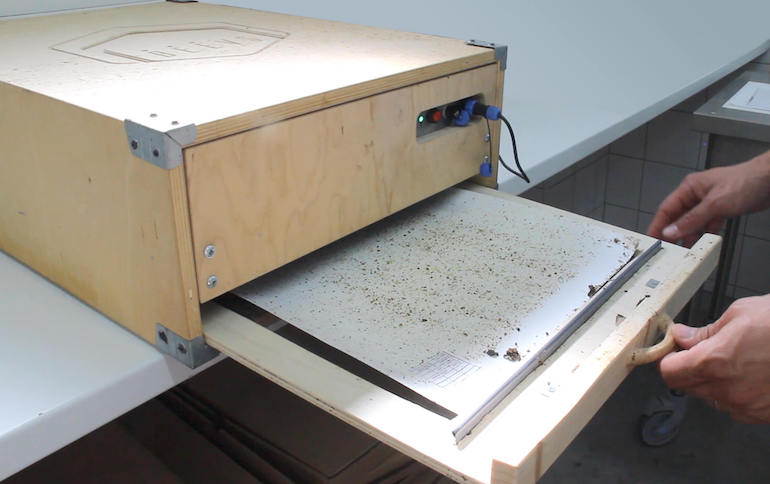

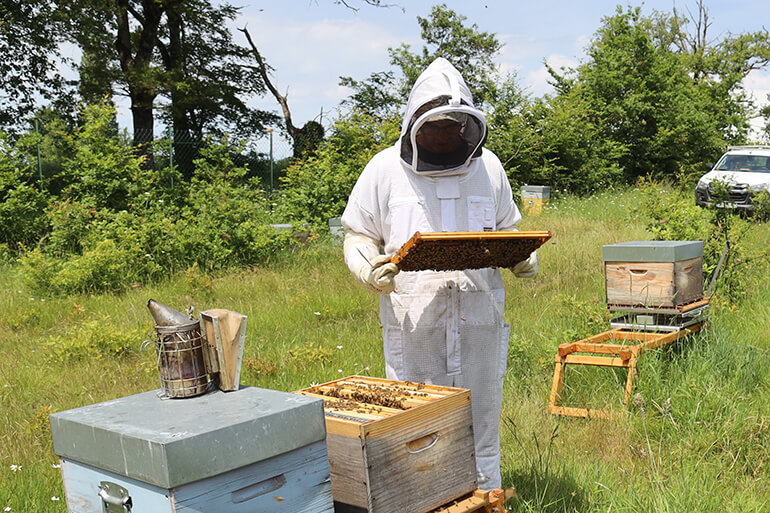
When frequently working in hives, many traumas can appear (lower back, shoulders, neck…); not to mention exposure to smoker fumes. Here are some tips that help us limit the impact on our team:
– Install hives on raised supports (40-50 cm from the ground) to avoid bending over and prevent back pain. Invest in dedicated hive supports and more ergonomic tools.

– Adopt better lifting techniques:
• Squat (rather than bend) to grasp the hive.
• Keep your back straight and use leg strength, as in industrial handling work.
• Bring the load close to your body: lifting at arm’s length is a very common mistake.
• Use an appropriate trolley or a special hive wheelbarrow to move several supers or hive bodies without carrying.
– Prepare your body:
• Quick warm-ups before intervention (back, shoulder, wrist stretches).
• Wear a lumbar belt for long honey harvest sessions or heavy inspections.
• To protect your respiratory system, avoid: pellets, cardboard, newspapers, industrial materials, or treated wood in the smoker and prefer natural fuels. Always position yourself downwind.
• Limit the use of the smoker: Know how to use smoke sparingly, only to calm if necessary.
• Wear a light mask (like FFP2/FFP3 filtering mask for long interventions or during harvest).
• Keep the smoke cool: A well-assembled smoker should emit warm, not hot or acrid smoke (otherwise, it burns and releases more toxins).
We hope these tips will be useful in your daily life! Feel free to share yours with us on Facebook or Instagram; we’ll be delighted to discover them and share them with the community.
Photo credits: Adobe Stock – Véto-pharma
 by Véto-pharma
by Véto-pharma  by Véto-pharma
by Véto-pharma